Disclosure: This article contains affiliate links. We may earn a commission from purchases at no extra cost to you, which helps our travel content.
The limestone karsts of Guilin and Yangshuo rise from the earth like ancient guardians of a forgotten time, their silhouettes cutting dramatic shapes against China's southern sky. When I first arrived in this region during the spring bloom of 2018, I was immediately struck by how the landscape seemed to breathe with its own rhythm – much like finding your stride in mile 18 of a marathon when your body and surroundings finally sync. But unlike the clearly marked race routes I'm accustomed to, navigating between these sister cities and their surrounding villages presents a beautiful chaos that rewards the prepared traveler. After three visits and countless transportation adventures ranging from triumphant to humbling, I've compiled this guide for fellow wanderers seeking to experience the soul of rural China without breaking the bank or losing your way. Consider this your transportation meditation – sometimes bumpy, occasionally frustrating, but ultimately transformative.
Understanding the Guilin-Yangshuo Transit Ecosystem
Before diving into specific transportation methods, it's worth understanding the relationship between these two destinations. Guilin is your gateway – a mid-sized Chinese city with airports and rail connections to major hubs. Yangshuo, about 65km south, is the jewel that most travelers are ultimately seeking with its breathtaking karst scenery and more laid-back vibe.
The region operates on multiple transportation tiers. There's the official network of buses, trains and taxis with fixed prices and schedules. Then there's the informal network – motorcycle drivers, private car owners, and bamboo raft captains who connect the dots between official routes. Finally, there's the self-powered options: bicycles and your own two feet, which often provide the most rewarding experiences.
During my second visit, I learned that transportation here follows its own cultural rhythm. Morning buses are punctual; afternoon departures become more... interpretive with time. Prices fluctuate based on season, with Spring Festival and October holidays commanding premium rates. What remains consistent is the need for patience and adaptability – qualities that have served me well both in marathon running and navigating rural China.
One tool that's been indispensable across my journeys is a reliable translation app. I use Pleco Dictionary which allows me to download the full dictionary for offline use in areas with spotty connection. The handwriting recognition feature has saved me countless times when trying to communicate destinations to drivers.
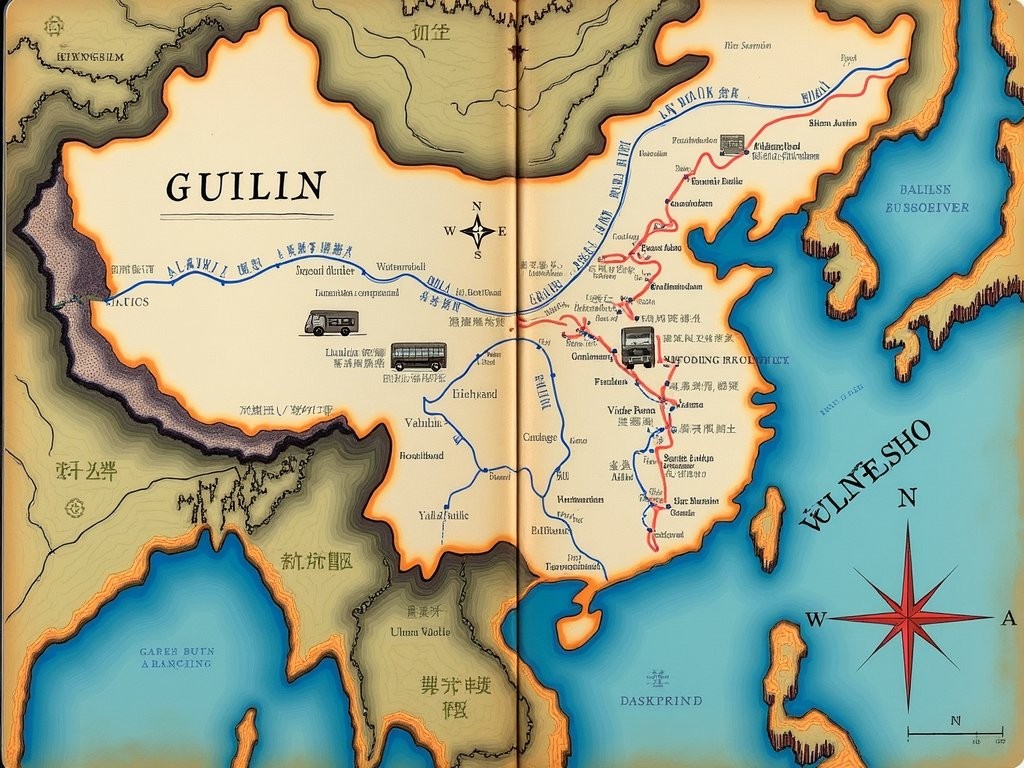
💡 Pro Tips
- Screenshot your hotel address in Chinese characters before departure
- Learn basic directional phrases like 'turn left/right' and 'stop here'
- Download maps for offline use – cellular service can be spotty between towns
The Li River: Slow Boats and Fast Ferries
The Li River isn't just a waterway – it's the region's historical highway and still one of the most scenic routes between Guilin and Yangshuo. You have essentially three options here, each offering a different perspective of the karst landscape.
The luxury cruise boats (¥400-600) are primarily geared toward package tourists. They're comfortable but insulate you from authentic experiences. I took one during my first visit and while the scenery was undeniably spectacular, I felt like I was watching China through a window rather than experiencing it.
On my return visit, I opted for the local ferry (¥50-70), departing from a small dock about 30 minutes outside Guilin city center. This public boat is used by locals and budget travelers alike. It's basic but functional, and the mixed crowd creates opportunities for cultural exchange. I spent two hours chatting with a monk returning to his monastery near Xingping village, our conversation drifting between broken English, simpler Mandarin, and appreciative silence as particularly beautiful formations passed by.
The third option – and my personal favorite – is arranging a bamboo raft journey for sections of the river (¥150-300 depending on distance and negotiation skills). These smaller vessels allow access to shallow tributaries and hidden beaches that larger boats can't reach. My guide, Mr. Wei, pulled ashore at a small family farm where we drank tea among chickens and drying chili peppers – an experience no organized tour could provide.
Whichever option you choose, protect your gear from water and sun. My dry bag has been essential for keeping my camera and journal protected during unexpected splashes and afternoon downpours that roll through the valley with little warning.

💡 Pro Tips
- For bamboo rafts, prices drop significantly in late afternoon after tour groups depart
- Bring small bills for impromptu stops at riverside villages
- The most photogenic sections are between Nine Horse Hill and Xingping
Buses, Minivans and the Art of Negotiation
The bus network connecting Guilin, Yangshuo and surrounding villages offers the most economical transit option, but requires a certain comfort with ambiguity. The main express bus between Guilin and Yangshuo (¥20-25) departs from Guilin's main station hourly from 7am to 7pm, making the journey in about 90 minutes. These larger buses are relatively comfortable with assigned seating and air conditioning that ranges from arctic blast to merely decorative depending on the age of the vehicle.
More interesting are the minivans (mianbaoche or 'bread cars' as they're affectionately called) that connect smaller villages. These depart when full rather than on fixed schedules, creating a delightful uncertainty that's part of the adventure. During my quest to find a remote monastery outside Baisha village, I waited 45 minutes as our driver patiently collected exactly 14 passengers, three large bags of rice, and someone's grandmother before deciding we had achieved optimal fullness.
The key to successful bus travel here is twofold: patience and preparation. I always carry my destination written in Chinese characters, but I've found showing a photo of your destination works even better. Local drivers recognize landmarks faster than they read location names, especially when dealing with foreign pronunciation.
For those seeking more flexibility, motorcycle taxis offer on-demand transportation for short distances. Helmets are theoretical rather than actual, so consider your comfort level with risk. I've found that carrying my own foldable helmet provides both safety and a conversation starter with curious locals who find the collapsible design fascinating.
When negotiating prices for unofficial transportation, establish the fare before departing. Start at 50% of the initial offer and settle around 70%. The negotiation isn't just about saving money – it's a cultural exchange that establishes mutual respect. Some of my most memorable conversations have happened during these good-natured haggling sessions, revealing humor and personality that transcend language barriers.
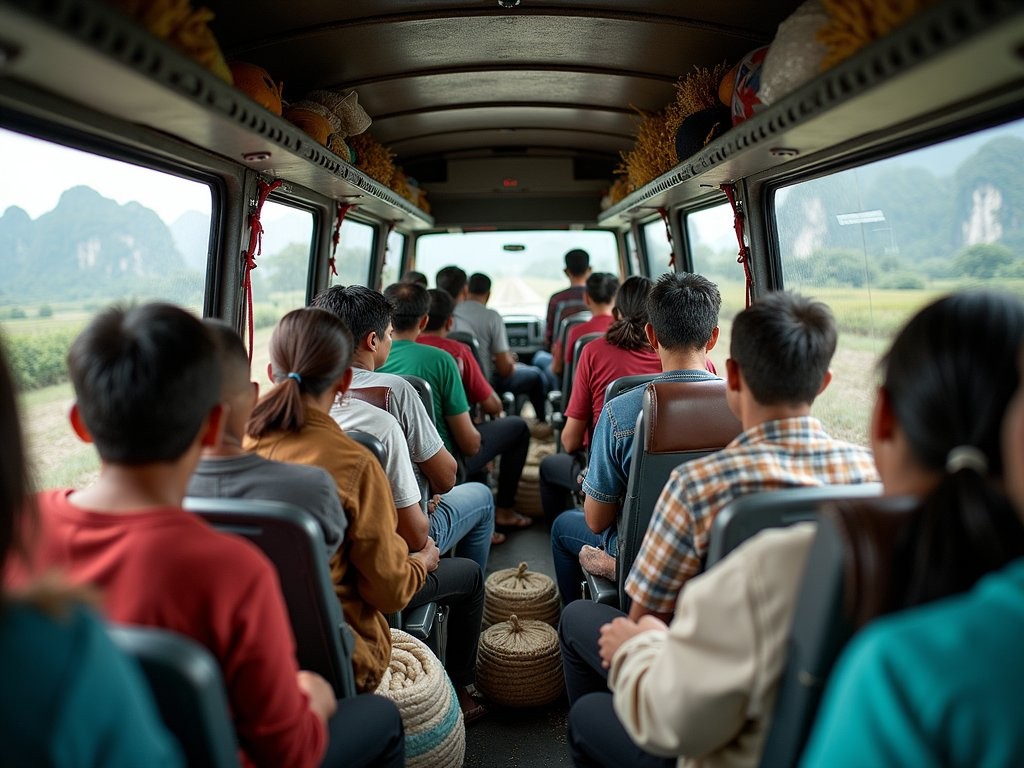
💡 Pro Tips
- For minivans, arrive early morning for the most reliable departures
- Keep small denominations of yuan for exact fares
- Buses to popular destinations fill quickly on holidays and weekends – purchase tickets a day ahead if possible
Two Wheels and the Freedom of Rural Exploration
If there's one transportation method that combines efficiency, economy and pure joy in the Guilin-Yangshuo region, it's the humble bicycle. The flat valley floors contrasted with dramatic vertical karsts create perfect cycling terrain, allowing you to cover substantial distance while remaining connected to your surroundings in a way that motorized transport simply can't match.
Both Guilin and Yangshuo offer numerous rental shops with quality varying dramatically. In Yangshuo, I recommend Bike Asia near West Street who maintain their fleet properly – crucial when you're 20km from town and reliability matters. Basic bikes cost around ¥20 per day, while higher-end models with suspension for rougher terrain run ¥50-100. Always test brakes, shifting, and tire pressure before accepting a bike.
The crown jewel of cycling routes is the 20km path from Yangshuo to the ancient town of Baisha, continuing to the breathtaking Yulong River valley. This route takes you through rice paddies, small farming communities, and past water buffalo lounging in muddy pools. Unlike the heavily trafficked Li River, these backroads reveal a China still operating at an agricultural pace that hasn't changed for centuries.
During my last visit, I spent five days exploring progressively more remote areas by bicycle. The further I ventured from tourist centers, the more authentic the interactions became. In one tiny village, I was invited to join a family's lunch after stopping to help their son fix a bicycle chain. We shared a meal of homemade tofu, local greens, and rice wine while communicating through my basic Mandarin and their teenage daughter's school English.
For multi-day cycling adventures, I always pack my compression shorts which prevent chafing during long rides and dry quickly when hand-washed in guesthouse sinks. Marathon training has taught me that proper gear prevents the small discomforts that can accumulate into trip-ruining problems.

💡 Pro Tips
- Photograph your rental bike and note any existing damage before accepting it
- Download offline maps with cycling routes marked – OpenStreetMap has excellent coverage of small paths
- Carry more water than you think you'll need – rural stores have unpredictable hours
High-Speed Rail: Connecting to the Wider China Network
While much of this guide focuses on local transportation, it's worth understanding how the Guilin-Yangshuo region connects to China's impressive high-speed rail network. Guilin North Railway Station (桂林北站) is your access point to this modern marvel, with bullet trains reaching Guangzhou in under 3 hours and connecting onward to Shenzhen, Hong Kong, and other major hubs.
The stark contrast between ultramodern rail stations and the ancient landscape they serve creates a fascinating juxtaposition that epitomizes contemporary China. I've often found myself stepping off a train moving at 300km/h directly into transportation methods unchanged for centuries – a temporal whiplash that makes travel here so compelling.
Ticketing for high-speed rail requires passport identification, and stations have security procedures similar to airports. During peak travel periods (especially Chinese New Year and October Golden Week), tickets sell out days in advance. The Chinese ticketing website (12306.cn) is challenging for non-Chinese speakers, so I typically use the Trip.com app which offers an English interface and accepts international payment methods without the frustrating verification issues of the official site.
From personal experience, I recommend arriving at stations at least 45 minutes before departure. Chinese stations are often massive and finding the correct waiting area can take time, especially when signage in English is limited. Station attendants are generally helpful but may not speak English, so having your ticket details saved in both languages is invaluable.
One aspect of Chinese train travel that surprises many Western visitors is the strict enforcement of exactly one passenger per ticket. During my first visit, I naively purchased a single ticket thinking my large backpack could sit on my lap – only to be required to purchase a separate full-price ticket for it because it exceeded size limits. Learn from my mistake and pack accordingly or be prepared for unexpected costs.
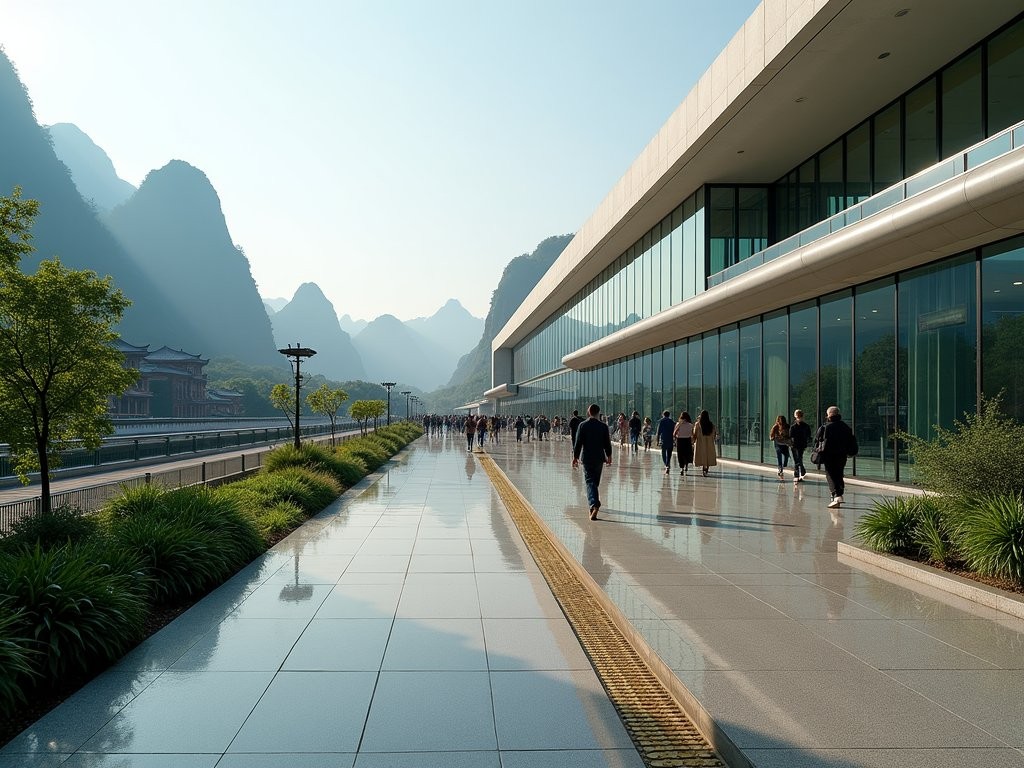
💡 Pro Tips
- Second class seats are perfectly comfortable and significantly cheaper than first class
- Download the China Railways app for real-time platform information and delay updates
- Bring your own food – station options are expensive and train selections limited
Monastery Visits: The Road Less Traveled
My passion for visiting monasteries has led me to some of the most remote and rewarding corners of the Guilin region. Unlike the heavily touristed temples near city centers, rural monasteries offer authentic spiritual environments where daily practices continue undisturbed by commercial interests.
Reaching these sacred spaces often requires combining multiple transportation methods and a willingness to embrace uncertainty. The Baishou Mountain Monastery, for example, involves a bus to Xingping village, followed by a motorcycle taxi to the trailhead, and finally a 40-minute hike up stone steps worn smooth by centuries of pilgrim feet.
What makes these journeys worthwhile is the reception that awaits. On three separate occasions, I've been invited to share meals with monks who seemed genuinely pleased to have a foreign visitor interested in their practices rather than just their architecture. My marathon training became an unexpected conversation bridge when I discovered that several younger monks incorporated running into their daily routines – spiritual discipline and physical endurance finding common ground across cultural divides.
For overnight monastery stays, which some permit for a modest donation, pack respectfully and minimally. My travel sleep sheet has been perfect for these situations – lightweight, compact, and appropriate for the simple accommodations typically offered. It shows respect for their hospitality while providing a clean, familiar sleep surface.
Before visiting any religious site, learn basic etiquette: appropriate dress (covered shoulders and knees), photography restrictions (always ask before capturing images, particularly of people), and ceremony protocols (remain quiet during prayer times). A small notebook for writing questions rather than interrupting has helped me navigate language barriers while showing respect for the contemplative atmosphere.
The transportation challenges in reaching these monasteries become part of the pilgrimage experience itself – a physical journey that prepares you for the spiritual destination. Some of my most profound moments in China have come not from arriving at these sacred spaces, but from the quiet conversations and unexpected kindnesses encountered along the paths leading to them.
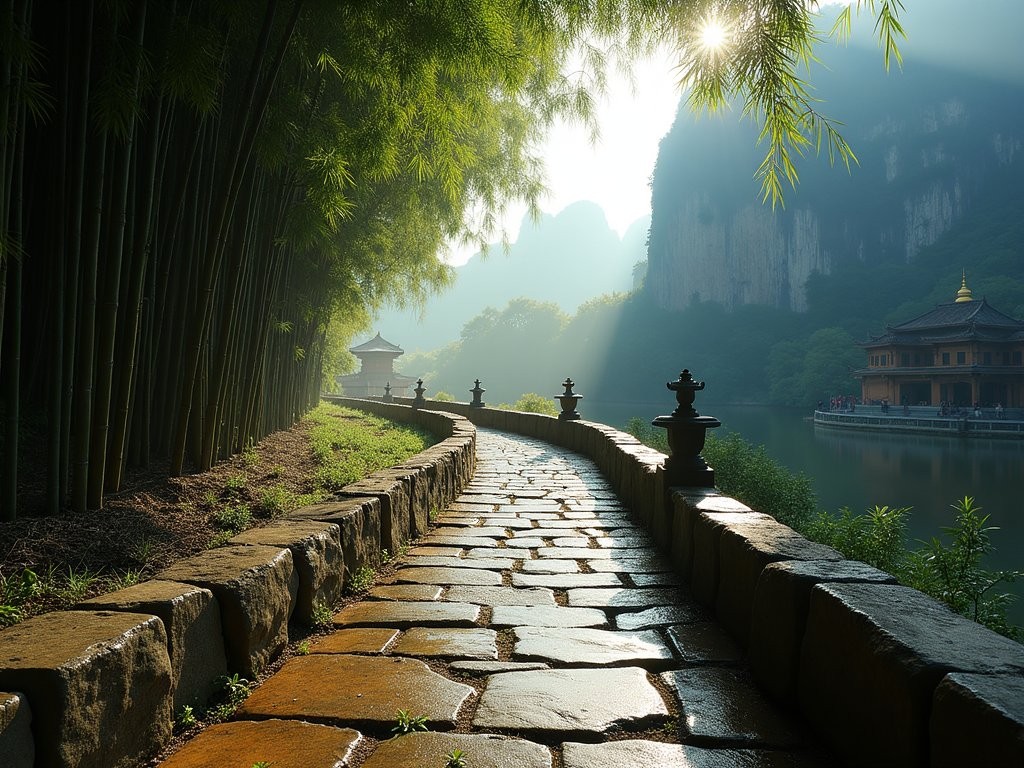
💡 Pro Tips
- Bring small, thoughtful gifts when visiting monasteries – tea is always appropriate
- Learn basic Buddhist greetings and terms of respect in Mandarin
- Verify visiting hours in advance – many monasteries close to outside visitors during specific ceremony days
Final Thoughts
As I lace up my running shoes for a dawn jog along the Yulong River on my final morning in Yangshuo, I reflect on how transportation in rural China transcends mere functionality. Here, each journey becomes a story, each transfer point a chapter break, each unexpected detour a plot twist in your evolving relationship with this ancient landscape. The transportation challenges that initially frustrate soon transform into the very experiences you'll recount years later.
Whether you're balancing on a bamboo raft as it navigates the Li River currents, pedaling through rice fields as farmers nod greetings, or squeezing into a minivan with locals and their market purchases, remember that the space between destinations often holds the most authentic connections. Pack patience alongside your phrase book, flexibility with your rain jacket, and openness with your hand sanitizer. Rural China rewards travelers who embrace its transportation not as an inconvenience between attractions, but as the beating heart of the experience itself.
Until next time, may your journeys be as rewarding as your destinations.
✨ Key Takeaways
- Combine transportation methods for the fullest experience – boats for scenery, bikes for freedom, buses for local interaction
- Learn basic Mandarin phrases related to transportation and carry destinations written in Chinese characters
- Build extra time into your schedule – rural transportation rarely runs on precise timetables
- The most memorable experiences often happen during transportation rather than at designated tourist sites
📋 Practical Information
Best Time to Visit
April-June and September-October
Budget Estimate
¥300-500 ($45-75) per day including accommodation
Recommended Duration
7-10 days minimum
Difficulty Level
Challenging

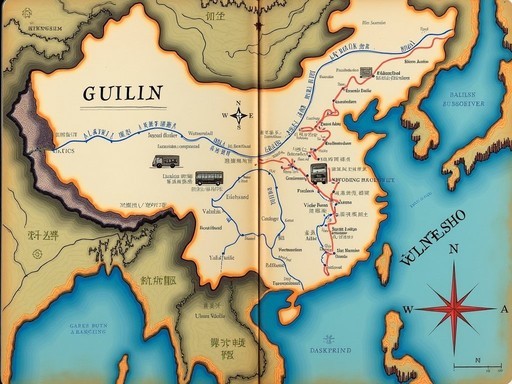

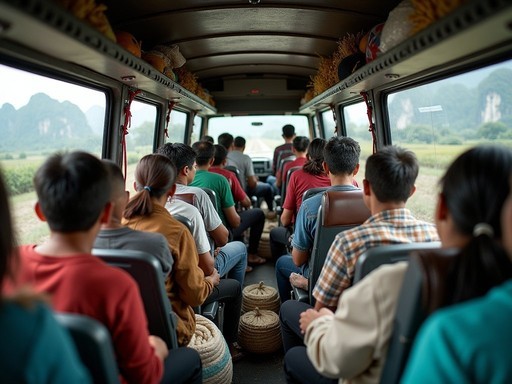
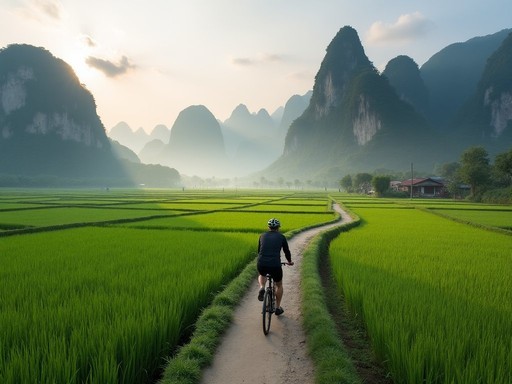
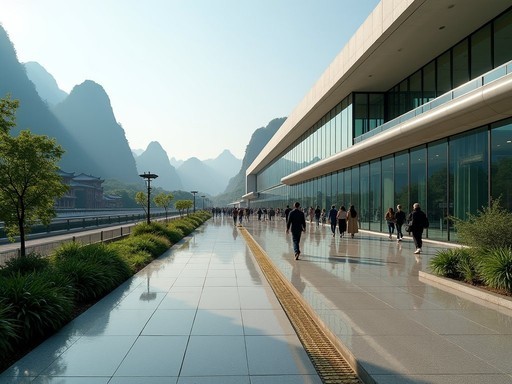
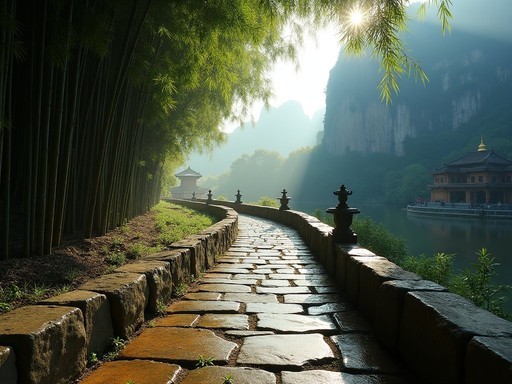










Comments
greenqueen
That sunrise shot along the Li River with the fisherman and his cormorants - absolutely magical! Did you arrange that photo opportunity or just get lucky?
Jean Wells
Having traversed this region multiple times over the past decade, I've observed significant evolution in the transportation infrastructure. Your assessment is spot-on regarding the balance between convenience and authenticity. One critical note for solo female travelers: the private minivans from the Guilin train station can be intimidating to negotiate alone. I've found success using the Chinese app DiDi (similar to Uber) in Guilin, though it becomes less reliable in Yangshuo proper. The bamboo rafts on the Yulong River offer a more intimate experience than the larger Li River boats and provide better photography opportunities of the karst formations. For those with limited time, I recommend prioritizing the Yulong over the more commercialized Li River experience.
coolnomad3847
Your photos of those karst mountains are insane! What camera do you use?
beachking
Just got back from Yangshuo last week! Your transportation guide would have been so helpful before we went. We ended up taking the express bus from Guilin airport to Yangshuo, which was actually pretty comfortable and only took about 1.5 hours. For getting around Yangshuo, we rented e-bikes from our hotel for 80 yuan/day which was the best decision - we could zip between villages without breaking a sweat in that humidity. The only thing I'd add is that Google Maps doesn't work well there, so we used offline maps which saved us multiple times when exploring those tiny village roads!
coolnomad3847
Did the e-bikes have enough battery for a full day? Planning my trip now.
beachking
Yep! We rode all day (like 30+ km) and still had battery left. Just avoid the cheapest rental places.
Taylor Moreau
Excellent guide, Mason. I was in this region on business last year and ended up extending my stay to explore. I found the transport connections challenging but rewarding. One tip for business travelers: many of the minivan drivers between towns now accept WeChat Pay, which makes negotiation much easier if you have it set up. Also worth noting that cell coverage can be spotty between towns, so download offline maps before venturing out. The bicycle rental shops near West Street in Yangshuo offer surprisingly good quality mountain bikes if you want to explore those back roads.
starpro4414
Going to be in Guilin next month! How much did the Li River boat cost? Worth it over the bus?
greenqueen
Definitely take the boat! We did it last year and the views are unbeatable. Bus is cheaper but you miss the best scenery.
starpro4414
Thanks! Did you do the tourist cruise or the local ferry?
greenqueen
We did the local ferry - way cheaper and more authentic. Just make sure to bring snacks and water!
islandway
Those limestone karsts look incredible! Adding this to my bucket list for sure.
AsianAdventurer
Pro tip for anyone going: download Baidu Maps before you go! Google Maps doesn't work well in China, and Baidu saved me countless times navigating between villages around Yangshuo. Just screenshot the Chinese characters for your destinations.
Mason Sullivan
Great advice! I should have mentioned this in the post. A good VPN is essential too if you want to access your regular apps.
travelwithme22
Your running route along Yulong River sounds amazing. Adding it to my list!
sunnyway
OMG those photos are STUNNING! The karst mountains look unreal! 😍 Heading there next month and can't wait to try the bamboo rafting. Did you feel safe as a solo traveler on local transport?
Mason Sullivan
Thanks! I felt very safe throughout my trip. The tourist infrastructure is well-developed, and while some minivan drivers might be a bit aggressive with pricing, it's just haggling - not unsafe. The bamboo rafts are incredible, especially in the morning light!
sunnyway
Perfect, morning raft it is! Can't wait! 🚣♀️
Venture X
Premium card with 2X miles, $300 travel credit, Priority Pass